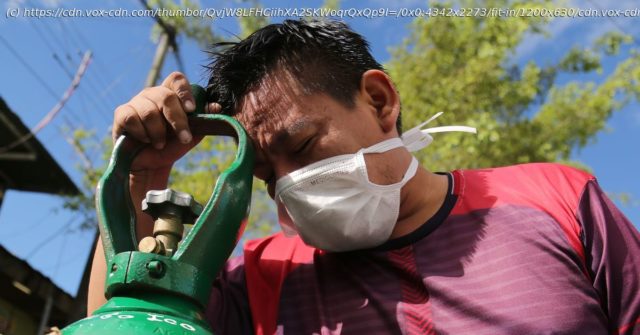Brazil, Peru, and Chile have made South America one of the world’s worst Covid-19 hot spots, the WHO notes.
South America has become “a new epicenter” of the coronavirus pandemic, according to the World Health Organization (WHO) — and it looks like the situation there is going to get worse before it gets any better.
The region officially has more than 636,000 confirmed cases and more than 31,000 deaths as of May 25. But due to a dearth of testing and medical facilities, experts believe the outbreak is far bigger than the official numbers show.
Brazil, the continent’s largest and most populous country, also has the largest outbreak, with more than 363,000 confirmed cases — and President Jair Bolsonaro is still refusing to impose aggressive measures to curb the spread.
In Peru, the area’s second-most affected country, many of the nation’s poorest residents are forced to violate government-imposed quarantine measures and curfews in order to buy food for the day or access government stimulus benefits.
And in Chile, the government’s inability to provide enough food for its citizens during the pandemic has led thousands to take to the streets of the capital, Santiago, to protest the lockdown, creating a perfect breeding ground for the virus to spread. President Sebastián Piñera said Sunday that the outbreak has brought the country’s health care system “very close to the limit” of breaking.
Even more concerning, experts say these conditions are unlikely to improve anytime soon.
Many countries in South America have deficient health care systems that struggled to cope with infectious diseases endemic to the region even before the coronavirus hit. Plus, the Southern Hemisphere is headed into winter, the season that tends to make illnesses like the coronavirus more prevalent. Widespread poverty may worsen these problems as the poorest residents struggle to pay for care or defy stay-at-home policies in search of food and funds.
It’s these trends that have Evangelina Martich, an Argentine expert on health policy at the University of Carlos III in Spain, concerned about South America’s immediate future. “The economic and social consequences will be huge,” she told me.
With over half of the region’s total coronavirus cases, Brazil is at the heart of South America’s Covid-19 troubles. Dr. Carissa Etienne, the WHO’s regional director for the Americas, told reporters Tuesday that the situation in the country is bad and projected to get worse.
“We are particularly concerned that the number of new cases reported last week in Brazil was the highest for a seven-day period since the outbreak began,” Etienne said. She also pointed to a coronavirus model showing that “daily deaths are growing exponentially, forecasting a peak of about 1,020 daily deaths by June 22,2020. By August 1,2020, a total of 88,300 deaths are projected.”
Much, if not all, of the blame for Brazil’s dire numbers falls squarely at Bolsonaro’s feet.
As Vox’s Jen Kirby has reported, the Brazilian president continues to minimize the disease as “a little flu” and promote the use of unproven drugs like hydroxychloroquine to cure it. Such stances sparked a massive fight between Bolsonaro and state and local leaders who have taken the crisis more seriously, imposing strict lockdown measures in defiance of the president.
The political turmoil, which resulted in the firing of one health minister and the resignation of the minister who replaced him, has led to disastrous results.
Brazil’s public health system was already strained before the pandemic; now, hospital systems in some of its major cities are on the verge of being completely overwhelmed.






